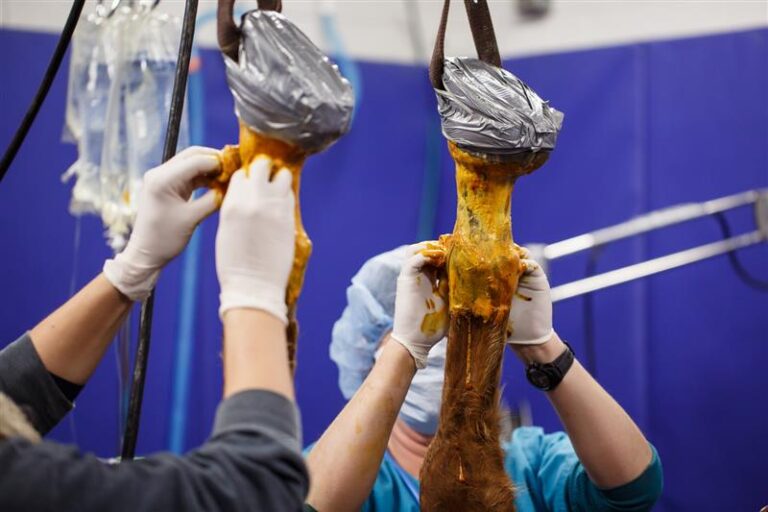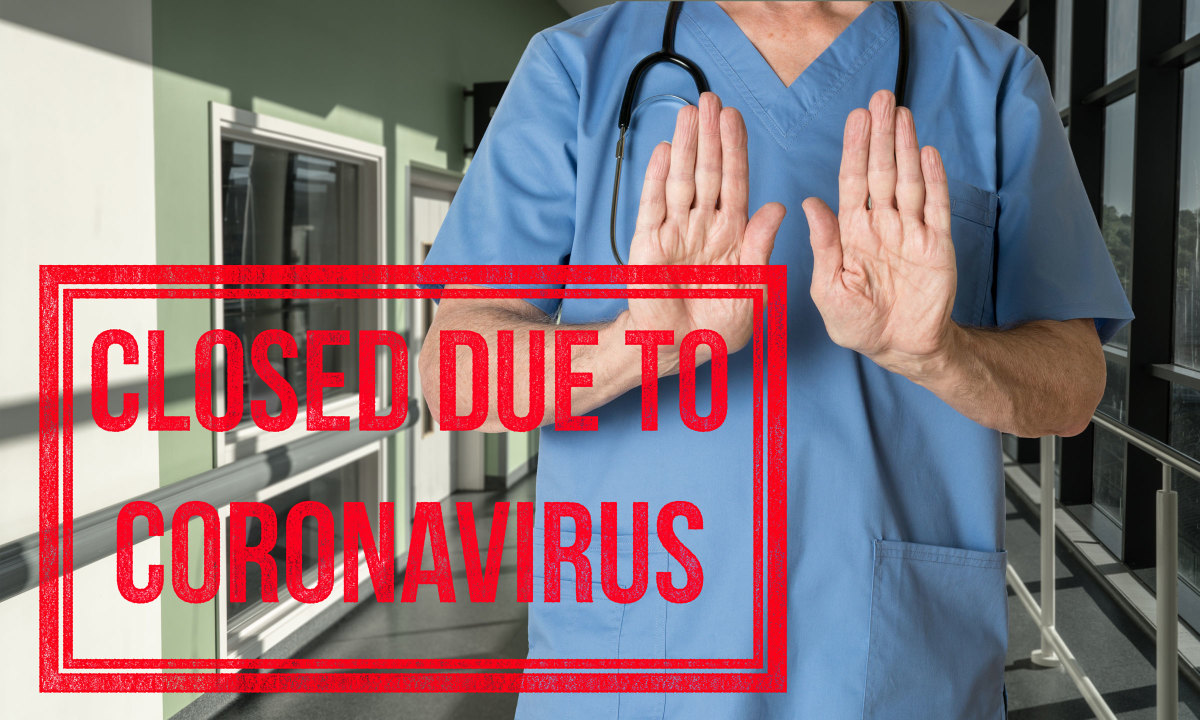
Pandemics have been a part of human history for as long as records exist. The bacterium Yersinia pestis was the cause of plagues in 541-542 AD (The Plague of Justinian) and in 1347-1351 (the Black Death). The former killed about half the earth’s population at that time, and the latter killed about 200 million people.
In the 20th century, smallpox killed as many as 300 million.
Between 50 to 100 million people died globally in the 1918 influenza pandemic, more than the number who died in World War I, which was being fought at that same time.
More recently, HIV, SARS, MERS and various influenza variants have led to significant morbidity and mortality.
The recent emergence of a novel coronavirus in China rapidly spread in the population of the large city of Wuhan. Coronaviruses are a large family of viruses that are common in people and many different species of animals. The new virus was named SARS-CoV-2 and disease from the virus was labeled COVID-19.
As of April 27, 2020, more than 3,055,651 cases of COVID-19 had been reported in more than two hundred countries and territories, resulting in over 211,065 deaths. More than 919,366 people have recovered.
As the virus spread across the U.S. in March. States began to issue orders to close non-essential businesses and limit group activities. The U.S. stock market plummeted to below 20,000 in mid-March. As of April 27, a total of 26.5 million unemployment claims had been made.
With the economy reeling, this survey was prepared in late March in an effort to collect a record of the responses that were occurring among veterinarians and veterinary practices.
Survey Demographics
The 18-question survey sent through Survey Monkey was distributed on the closed Facebook groups Women in Equine Practice, Equine Vet-2-Vet, Moms with a DVM, AAEP Member Vet Talk and AVMA. The survey was open for seven days (March 23-29, 2020), and 219 veterinarians responded.
In order to learn some demographic information about the respondents, questions included the type of practice (equine, large animal, mixed or small animal), the year of graduation from veterinary school, whether the respondent was an associate or an owner, the size of the practice and the gender of the respondent.
All of the questions allowed the veterinarians to write comments, and they wrote many to explain their answers.
The majority of respondents (67.58%) indicated they worked at equine-exclusive practices, followed by mixed practices (13.24%), companion animal (11.42%), and large animal (7.76%).
About 45% of respondents graduated in the last decade, around 34% graduated 11 to 20 years ago, and about 20% of respondents graduated more than 20 years ago.
A little over half of the respondents (55.25%) indicated they are practice owners, and about a third (37.44%) said they are associates. The remaining participants stated in the comments that they work in academia or are relief veterinarians.
The number of full-time equivalent (FTE) veterinarians at the practices where the respondents work was fairly similar to the results of the 2016 AVMA AAEP Economic Impact Study regarding practice size, but somewhat skewed toward smaller practices.
Here are some stats from this survey verses the AVMA AAEP survey:
- Solo practices accounted for 40.83% of respondents in this survey (that number was 38.5% in the AVMA AAEP survey)
- two to three FTE doctors were present at 28.44% of respondents’ practices (compared to 26.9% in the AVMA AAEP survey)
- four to six FTE veterinarians worked at 15.60% of respondents’ practices (compared to 13.9% that had 4-5 FTE doctors in the AVMA AAEP survey)
- More than six FTS doctors accounted for 15.14% of respondents in this survey (compared to 20.6% of practices that had 6 or more FTE vets in the AVMA AAEP survey).
The gender of the respondents was imbalanced, with 93.61% female and 5.94% male. One respondent preferred not to reveal his/her gender.
How Practice Responded?
Respondents were asked “How has your practice responded to the COVID-19 pandemic?”
The majority (59.36%) indicated that they had made alterations in operations, but that they were still seeing all cases.
Almost a third (30.59%) said they were seeing urgent/emergency cases only.
A little over 4% had closed their practices entirely.
Another 4% said they were operating exactly the same as before the pandemic.
Many comments left by respondents indicated the practice’s attention to limiting client contact, spoke of a decline in demand, or referenced state actions.
Changes in Operations?
Next, respondents were asked “If your practice has altered operations, but has not closed, what has been changed? Choose all that apply.”
The most frequent alterations to operation were reported to be altering appointment procedures, biosecurity protocols, patient visit protocols and medication procurement procedures.
About a third of practices were also postponing elective and routine care while seeing only urgent or emergent cases, and a third were altering how patients entered the veterinary facility.
About a quarter of respondents were using an increased amount of telemedicine and had altered payment policies.
Only 6.42% had either not altered operations or had closed (see Figure 1.)

Are Clients Cooperating?
The respondents were asked, “If your practice has implemented changes, how well are clients cooperating?”
A slight majority of respondents (54.84%) noted that clients were cooperating “Pretty well for the vast majority” and 17.05% reported that the clients were behaving “Amazingly well—the vast majority are going above and beyond.”
Unfortunately, 15.21% reported the animal owners were conducting themselves “Well, except for a few clients that are awful.” A total of 5.53% said “It is a struggle to get cooperation, but most do cooperate if we stay firm.”
Fortunately, only about 1% of respondents said, “Frustratingly few are cooperating.”
How Has Business Changed?
The respondents were asked what steps had been taken by their practice in reaction to the economic downturn.
The most commonly chosen response (36.06%) was “Other” and respondents wrote in their comments that no changes had been made.
The next most prevalent answer was the reduction of staff hours, with 32.96% of practices making this change.
About a quarter (25.96%) reduced office hours and hours that veterinarians were working (25.00%) (see Figure 2).
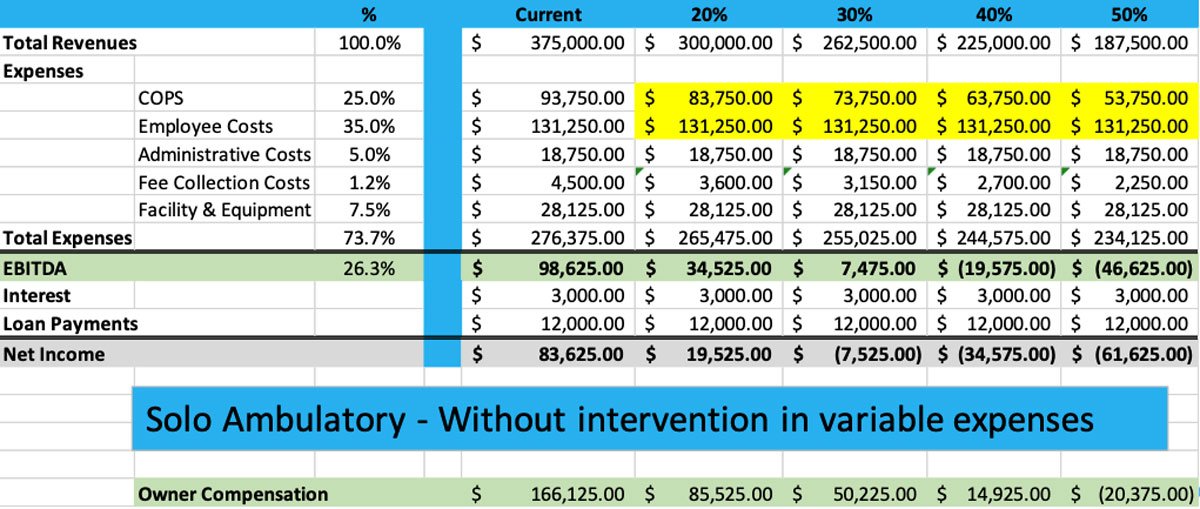
How Are You Helping Others?
The next survey question was “How is your practice helping others during this crisis? Choose all that apply.”
Over three-quarters of practices (78.14%) answered that they were “staying open to provide services,” and 64.19% reported they were “conserving Personal Protective Equipment (PPE) and postponing elective surgeries, etc.”
A healthy number (13.02%) were “donating PPE on hand at the practice to ‘front-line’ organizations.”
“Donating or discounting veterinary services to newly unemployed clients” was a response by 5.58% of survey respondents.
Less than 5% of respondents indicated that their practices were “Lending ventilator(s) and/or anesthesia machine(s) that can be retrofitted as ventilators to ‘front-line’ organizations,” “Volunteering for service at “front-line” organizations,” or “Creating an ‘angel fund’ for clients to donate to, to support veterinary services for newly unemployed clients’ animals.”
What Concerns You Most?
Possibly one of the most important questions of the survey was “Which concerns you the most? Rank in order.”
The most important concern of respondents was a loved one becoming ill with COVID-19, followed by the economic impact on the household or personal finances.
Respondents worried more about the effects of the pandemic on the greater world than they did about becoming ill themselves (see Figure 3).

What Are You Experiencing?
The survey sought to explore the personal experiences of respondents with the novel coronavirus, asking “Which of the following have you experienced or are you experiencing?”
Many respondents (69.50%) answered “I feel that my work as a veterinarian is putting me at risk every day.”
Only three respondents of 200 (1.50%) had been ill themselves with COVID-19. Four (2.00%) reported “My family member has been ill with COVID-19.”
A total of 24.5% reported that “One of my friends, neighbors, or community members has been ill with COVID-19,” and 3.50% said “One of my family members, friends, neighbors, or community members has died from COVID-19.”
A large number of respondents (42.00%) reported that “One of my family members or closest friends is on the ‘front lines’ in a human medicine or first responder setting.”
Another 17.50% indicated “I feel that one of my family members’ work is putting our family at risk every day.”
How Are You Feeling?
Respondents were then asked “Which of the following emotions are you experiencing? Choose as many as you are feeling.”
Of the 219 responding to this question, 189 (86.30%) were experiencing worry or anxiety, with 31.05% feeling fear or panic.
Sadness was affecting 45.66%, but 50.68% reported acceptance or resolve.
Anger or irritation (33.79%), depression (22.37%) and disbelief (18.26%) were not uncommon (see Figure 4).
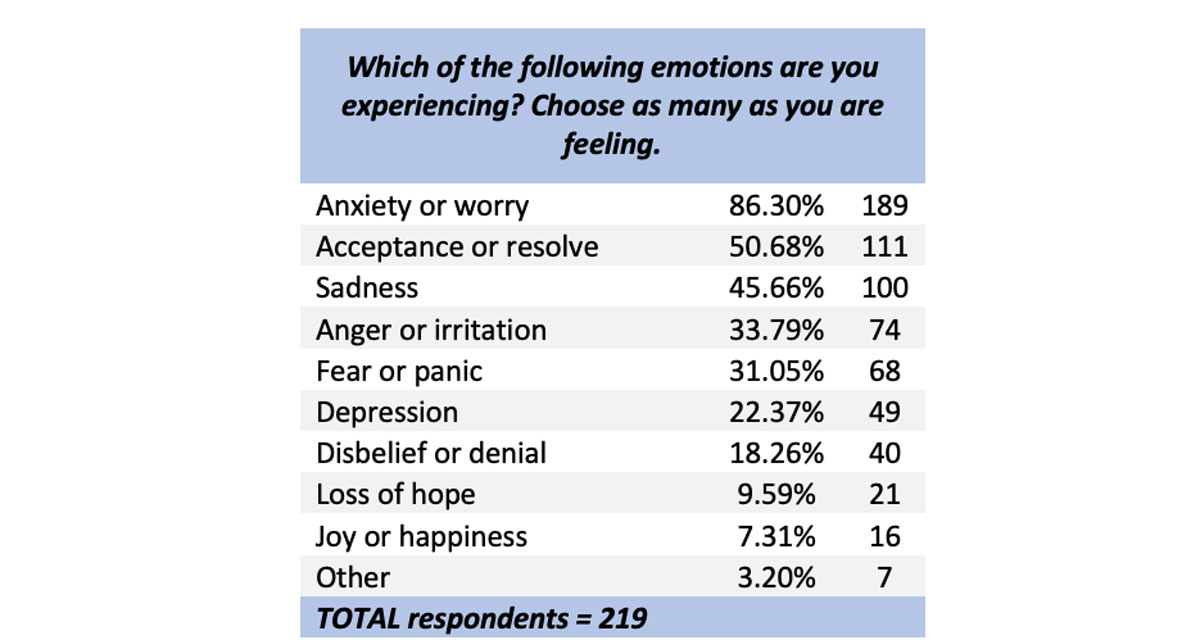
Symptoms of Stress
When asked “What symptoms of stress are you experiencing? Choose all that apply,” 72.22% of respondents indicated they felt anxiety or worry.
The next most-prominent feeing was that 54.63% were over-focusing on breaking news stories about COVID-19, and 41.20% were experiencing insomnia (see Figure 5).

Self-Care Measures
Respondents were asked about the type of self-care measures they were taking with the question “What type of self-care are you giving yourself? Choose all that apply.”
About three quarters (76.96%) chose “Relaxing in your favorite way—reading, watching TV, hanging with family, etc.” A total of 63.59% turned to “Exercise—walking, running, hiking, biking, spinning, etc.”
“Connecting with others in person or by phone, Skype, etc.” was a popular strategy with 59.91% of respondents. None of the other options (Yoga, Meditation, Mindfulness, Journaling, Acts of Service, or Spiritual Practice) gleaned more than a 20% response.
Do You Have Children At Home?
One third (33.33%) of respondents had children at home. Respondents used a number of strategies to protect their families, including social distancing, limiting travel and increasing hygiene (see Figure 6).
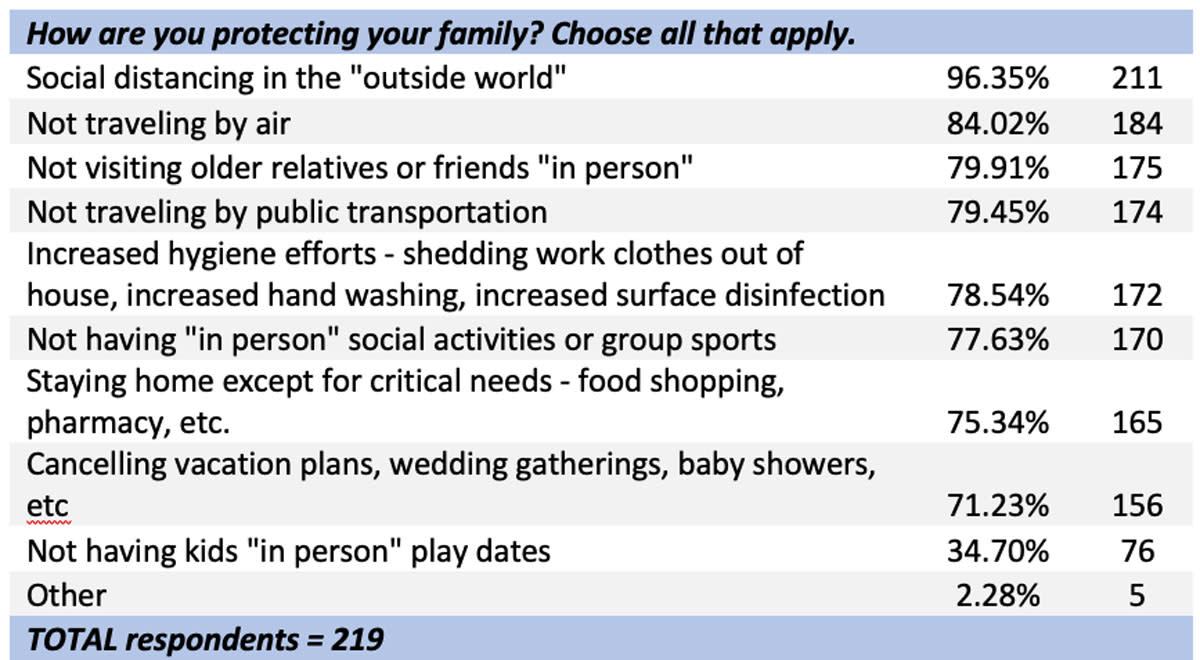
Student Debt
Although 47.03% of respondents indicated they had no educational debt, here is the breakdown of the majority who did owe debt:
- 10.05% said they owed $50,000 or less
- 12.33% owed $51,000 to $100,000
- 4.57% owed $101,000 to $150,000
- 5.94% owed $151,000 to $200,000
- 10.96% owed $201,000 to $300,000, and
- 9.13% owed more than $300,000
Head of Household
When asked “Are you the primary breadwinner in your household?” 58.9% of respondents answered “yes.” An additional 16.89% answered “No, but my income is essential to the household.”
Another 18.26% said “My partner and I both contribute about equally.”
These financial realities undoubtedly increase the stress surrounding the economic impact of the pandemic. As one respondent commented, “I had to move back to my mom’s house because I lost my job on March 23.”
Take-Home Message
As the responses to this survey show, many veterinarians have significant changes in their working environment as a result of the COVID-19 pandemic. They also have experienced increased stress as a result.
It is probable that in the days since this survey was closed, additional changes have occurred for many in the veterinary industry.
These times are unprecedented, and it is unclear what the future holds. What is certain, however, is that veterinarians will continue to be dedicated to animal health and welfare, and the greater public health of our nation and the world.
Learn more about Covetrus telemedicine options here.
Covetrus has online an online pharmacy option that is right for your business.



